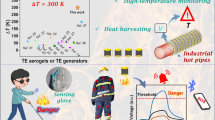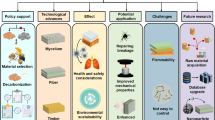Abstract
The focus of this paper is to determine flammability characteristics of rubber materials that are common to vehicle tires, conveyor belts, and electrical power cable insulation and to compare the thermal magnitude of cargo quantities of these materials to other fuels that are publicly transported. Although a literature review was performed, very little data was fo und on this topic. Standard flammability test procedures were used to measure the critical flux for ignition, critical ignition temperature, and heat release rates (HRR) of rubber compounds common to tire tread materials and conveyor belt covers. Both the intermediate scale calorimeter: ISO 14696, ASTM E-1623 (ICAL) and the cone calorimeter: ISO E-5660, ASTM 1354 (Cone) provided the bulk of the data. Critical ignition flux and vertical flame spread data for rubber based electrical insulations were determined using a radiant panel from a modified ASTM flame spread apparatus: ASTM E-162. thermogravimetric analysis was also used to evaluate thermal decomposition progression of selected test materials. Further, suppression tests were conducted on tire piles to evaluate agents to extinguish and control tire fires. Also, the HRR of the tire piles were measured and compared to work performed by others. Results confirm that the area heat release rate of rubber materials is directly proportional to exposure flux intensity. The critical exposure flux for ignition of a variety of rubber-based materials is approximately 20 kW/m2 to 30 kW/m2 and the critical temperature for piloted and non-piloted ignition were independent of exposure intensity at ~400°C and ~600°C respectively. In large quantities, rubber tire loads have total HRR comparable to the heat released from similar areas of liquid hydrocarbon spills.












Similar content being viewed by others
References
Yung D, Mehaffey JR (1991) Fire resistance requirements for rubber-tire warehouses. Fire Technol 27(2):100–112. doi:10.1007/BF01470862
Cullis CF, Hirschler MM (1981) The combustion of organic polymers. Clarendon Press, Oxford
Ramesan MT (2004) Thermogravimetric analysis, flammability and oil resistance properties of natural rubber and dichlorocarbene modified styrene butadiene rubber blends. React Funct Polym J 59:267–274
Drysdale D (2000) An introduction to fire dynamics, 2nd edn. Wiley, New York
Incropera FP, DeWitt DP (1996) Fundamentals of heat and mass transfer, 4th edn. Wiley, New York
Hasegawa HK, Staggs KJ, Fernandez-Pello AC (1986) A procedure for ranking fire performance of electrical cables. International Meeting of Fire Research and Test Centers, Avila, Spain, UCRL-93936
Lönnermark A, Blomqvist P (2005) Emissions from tyre fires. SP Swedish National Testing and Research Institute, SP REPORT 2005:43, Borås, Sweden
Hasegawa HK, Staggs KJ (1990) Large-scale tests to evaluate the effectiveness of various fire suppression agents on stacked tires. Draft Report Lawrence Livermore National Laboratory, Livermore
Hertzberg T, Ingason H (2008) Fire test with a front wheel loader. SP Technical Research Institute of Sweden, SP REFERENCE P801596, Borås, Sweden
Blanchat T, Figueroa V (2000) Large-scale open pool experimental data and analysis for fire model validation and development. In: Proceedings of the ninth international symposium of association for fire safety science, pp 105–116
H Ingason (2008) State of the art of tunnel fire research. In: Proceedings of the ninth international symposium of association for fire safety science, pp 33–48
Author information
Authors and Affiliations
Corresponding author
Rights and permissions
About this article
Cite this article
Alvares, N., Hasegawa, H. & Staggs, K. Ignition, Heat Release Rate and Suppression of Elastomeric Materials. Fire Technol 52, 1575–1593 (2016). https://doi.org/10.1007/s10694-015-0483-0
Received:
Accepted:
Published:
Issue Date:
DOI: https://doi.org/10.1007/s10694-015-0483-0




